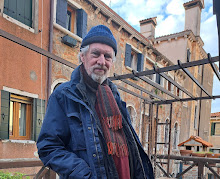Greetings, friends and comrades! This blog is devoted to a project that begins its life called “Occupations and Properties.” It is dedicated to representing aspects of the international social center movement through a project exhibition beginning in New York City in April of 2009. This movement is of the left, generally resistant to the state and capital, and often anarchist identified. While the movement has unfolded most clearly over decades in European countries, it has clear counterparts in the United States – including the first venue for “Occupations & Properties,” ABC No Rio on the Lower East Side – and direct implications for grassroots urban development throughout the inner cities of the U.S.
This project exhibition is initiated after my experience as a co-editor on Clayton Patterson, ed., “Resistance: A Radical Social and Political History of the Lower East Side” (2007). This book began as an anthology of texts on the squatter movement of the late 1980s and ‘90s on the LES, but over a few years evolved into a panoramic look at the radical past of the district. Patterson has been photographing the people and the changes there for decades, and extensively documented the squatter movement.
Many things became clear in the course of working on this book. Among these was that the events on the Lower East Side were heavily influenced by the models of the English, Dutch and German squatting movements. In doing a Lexis-Nexis journalism review for my essay in “Resistance,” I found nothing in the U.S. press that dealt squarely with the movement. It was always treated as crime or riot, and never analyzed or explored by any mainstream journalist I could find.
Before working on the book “Resistance,” I was already very aware of the positive power of direct action occupation activity from our group’s “art squat” of a building on 123 Delancey Street in 1979-80. Called the “Real Estate Show,” this action led to our being given the opportunity by the NYC administration to develop 156 Rivington Street as an art gallery and cultural center.
We in turn had been inspired by the group CHARAS who had occupied a former school building on East 9th Street and called it El Bohio. This group of Puerto Rican activists and literati came from a strong tradition of activist occupations, particularly by the Young Lords Party.
When I emerged from my graduate school bunker years later to survey the Lower East Side squatter scene in the early 1990s, Clayton Patterson and I did an art exhibition at the 13th Street squats where my artist friend Robert Parker, a charter member of the group “Rivington School,” had an outdoor iron forge. Moving through the squats, I discovered nearly every one of them had an art gallery. I met Homeless Higgins, and Andrew Castrucci of Bullet Space, who produced the wonderful tabloid (and silkscreen poster edition) called “Your House Is Mine.” Clayton and I produced the show, and a ‘zine-style catalogue of it – and a group among the squatters produced an angry manifesto critiquing the representation of their struggle…
Just as it ought to be!
In 2006 I returned to Europe, to Berlin, after a 20 year absence. I was delighted to see the squats there – but a little disappointed that they were all kind of moribund… They, like their New York counterparts, had been given a deal with the city, and the whole movement had settled down. As I discovered on subsequent trips, this is not true elsewhere – particularly in Spain, where a radical social center movement has recently held its second annual meeting in Barcelona. “Network is coming,” Krak declares, and I am hopeful that “House Magic” will begin the process of extending it, through the stories, lessons and examples from this movement, to the United States.
Friday, January 23, 2009
Subscribe to:
Posts (Atom)
